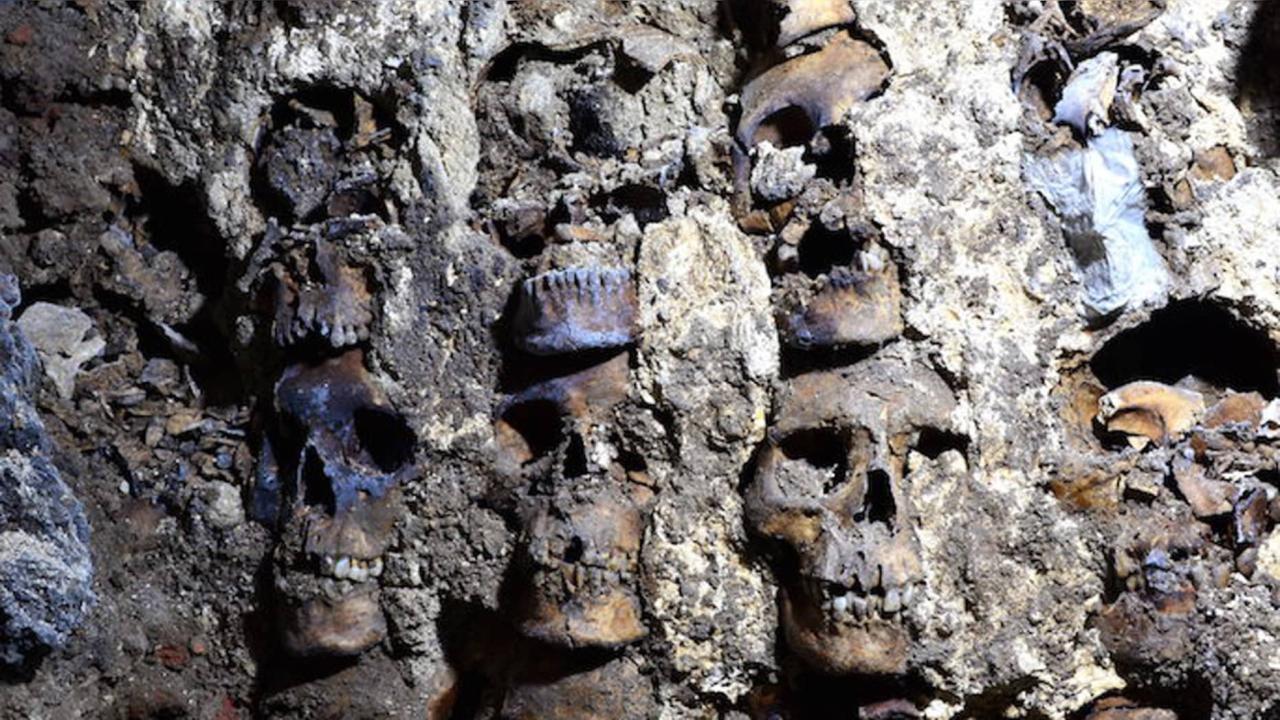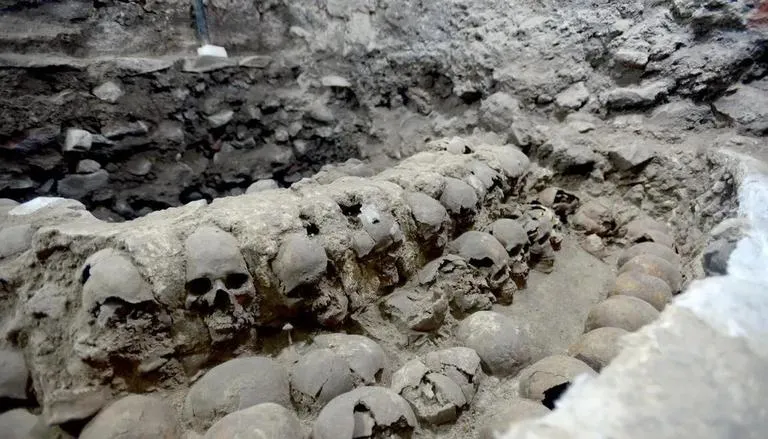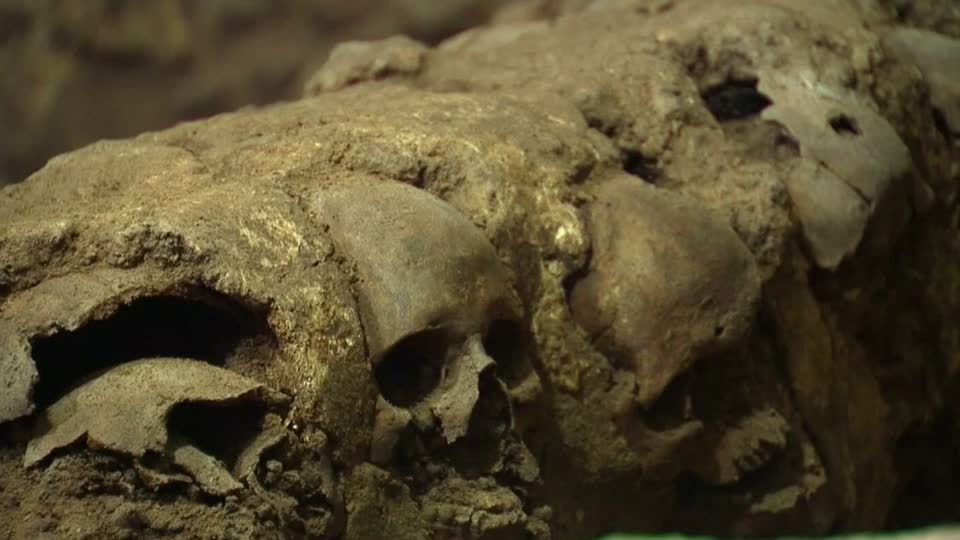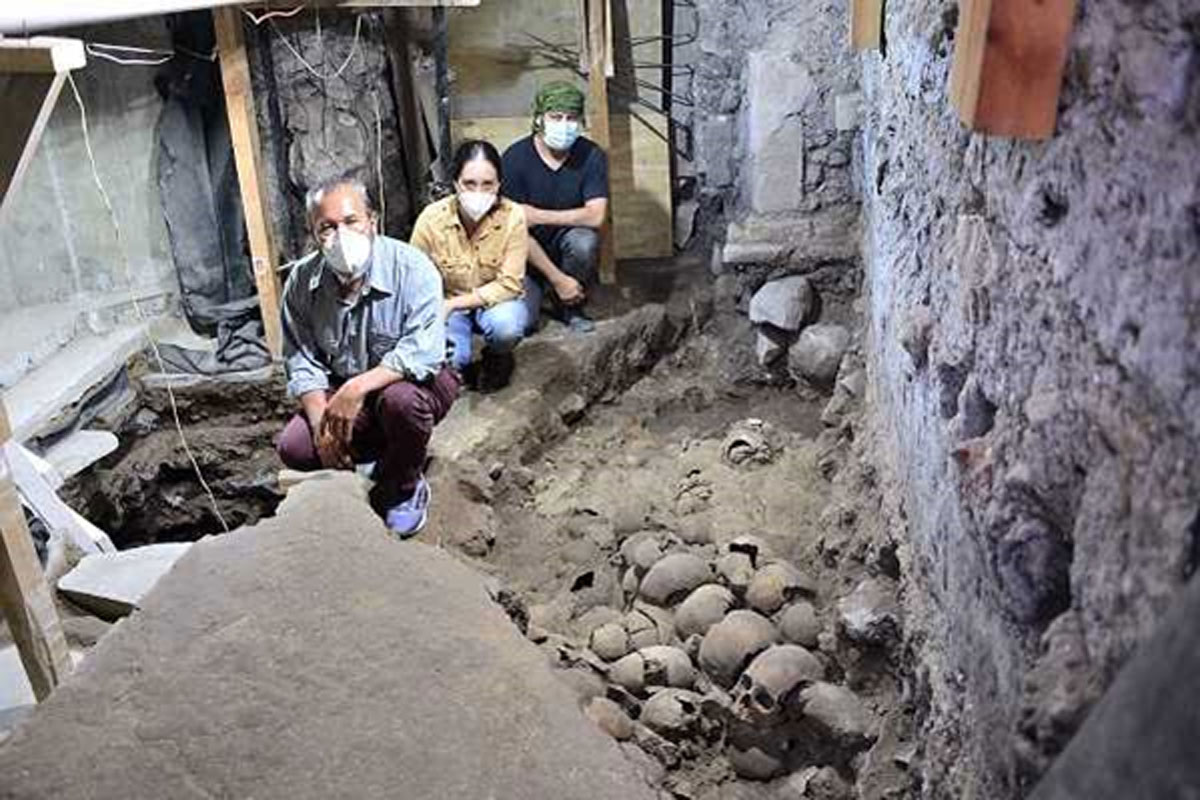Des archéologues de Mexico ont récemment mis au jour l’un des vestiges les plus étranges de la civilisation aztèque. L’équipe a trouvé une tour de crânes composée de 199 restes humains sous le bâtiment du XVe siècle connu sous le nom de Huey Tzompantli. En plus de ces crânes, les archéologues en ont déjà trouvé 400 autres dans la région.
Une équipe d’archéologues de l’Institut national d’anthropologie et d’histoire du Mexique a découvert cette tour il y a cinq ans. Cette tour est considérée comme l’une des sept qui se trouvaient soi-disant dans la capitale aztèque de Tenochтιтlan.

Les archéologues ont sans aucun doute fait une découverte choquante lorsqu’ils ont trouvé la tour aztèque, qui était faite de crânes humains. Cette tour a 500 ans et a été construite pour honorer les dieux aztèques.
When they first stumbled across the Aztec Tower it caused quite a stir among scholars. It was also considered controversial, coming from what most people would consider an extinct culture that had been gone for centuries.
This revelation is a reminder of how much we are still learning about our past and how important it is to preserve our history.

While the Aztec people were defeated by Spanish conquistadors 500 years ago, their legacy lives on today through this unique tower. The builders of this tower used a variety of building techniques that were not seen in the architecture of the time.
It is not clear if the people of the Aztec tribe in question were aware that this was their final resting place. They might have been trying to show off the power of their gods in order to ward off attacks from the Spaniards, or perhaps they had a far more sinister purpose for building such a tower.
The idea for building an elaborate human skull-shaped tower comes from “L’Histoire des Spectacles,” written by French historian Georges Duby in 1980.
The ziggurat in Mexico City is a temple built by the Aztecs 500 years ago. You might not be able to pronounce this word, but it’s hard to forget!

The ziggurat’s conical base is composed of human skulls, considered by many to be one of the most disturbing examples of death art in the world.
It finally became so structurally unstable that it had to be demolished in 1872.
This tower was found next to the Templo Mayor. This temple is a 14th and 15th-century religious building meant to honor the Aztech battle god Huitzilopochtli. There are also traces that the rain god, Tlaloc, was also worshipped in this tower.
At least three of the skulls from this new tower were from children. Noticeably, these three were placed in the eastern corner of the tower. Experts found the age of the owner of these skulls after investigating their size and the development of their teeth.
According to Reuters, in 2017, the skulls were thought to belong to male warriors who their enemies defeated in combat. However, new evidence suggests otherwise. A few skulls in the tower belonged to women and children.

According to Barrera Rodriguez, an archaeologist, we cannot determine which skulls belonged to warriors. However, their team also suspected that some of the skulls belonged to captives sacrificed to the gods worshipped in the temple.
While the tower may look terrifying to the modern eye, the Mesoamericans considered them sacred. The Aztecs made these sacrifices to keep the gods alive and stop the universe from being destroyed. This, along with the religious connotation attached to the temple, makes these towers a building of life instead of death.
While seven of these towers are supposed to have been erected, not all survived. When the Spanish invaders and their local allies went to the area, they collapsed sections of the towers and spread them throughout the region.
Dans un communiqué, Alejandra Frausto, la ministre mexicaine de la Culture, a déclaré que le Templo Mayor continue d’étonner. Il a qualifié le Huey Tzompantli de découverte archéologique la plus incroyable de ces dernières années.








